Lukas Höller
“This blog post is a synthesis of the Master thesis of Architecture Student Lukas Höller (TU Delft). His research uses design to mediate between different stakeholders and scenarios within port cities, in this case the port city of Kirkenes (Norway). Located above the Arctic Circle, climate change is an immediate factor in planning ideas and practices of the city. Dealing with stakeholders varying from Chinese industry to the indigenous Sámi, Lukas presents various scenarios in which economic, social and cultural interests are integrated. With this approach, he links to ideas on what-if histories and design fiction that we work on within the Port City Futures group.” (Carola Hein, research mentor, Fransje Hooimeijer, main mentor.)
Port cities around the world face spatial, cultural, economic and institutional challenges of climate change. Because port and city coexist within the same territory, they need to negotiate visions, values and goals with a wide variety of stakeholders. Despite the increasing number of urgencies, port-city stakeholders continue to plan as before, prioritising economic growth over integrated socio-spatial development. This is a risky strategy, because it increases friction between people, planet and prosperity, and emphasises the institutional separation of port and city. Designers and planners are left to decide: should they approach port city landscapes to generate the maximum amount of capital, or should they facilitate a balance of economic, social, and ecological interactions?
This struggle becomes particularly clear in the case of Kirkenes, Norway. This port city and former mining-town with 10.000 inhabitants is located around 400 km above the Arctic Circle, and presents itself as the capital of the Barents Region and gateway to the east, as it is close to the Norwegian-Russian border. Changing climate and melting Arctic sea-ice will lead to drastic changes in Kirkenes. Increased navigability as well as new access to aquatic fossil fuels and mineral resources such as iron-ore can turn the region into a new European gate and logistic node as the soon-to-be ice-free Northern Sea-Route, creates a 40% faster trading-route between Asia and Europe (Ministry of Transport and Communications 2019, p. 4). Other stakeholders imagine a different future for Kirkenes, one of a future-proof, sustainable and resilient port city, that retains its remote character, rich on seemingly untouched nature in close relation to the well-being of the Sámi, the only officially recognised indigenous people in Europe, inhabiting the territory for thousands of years.
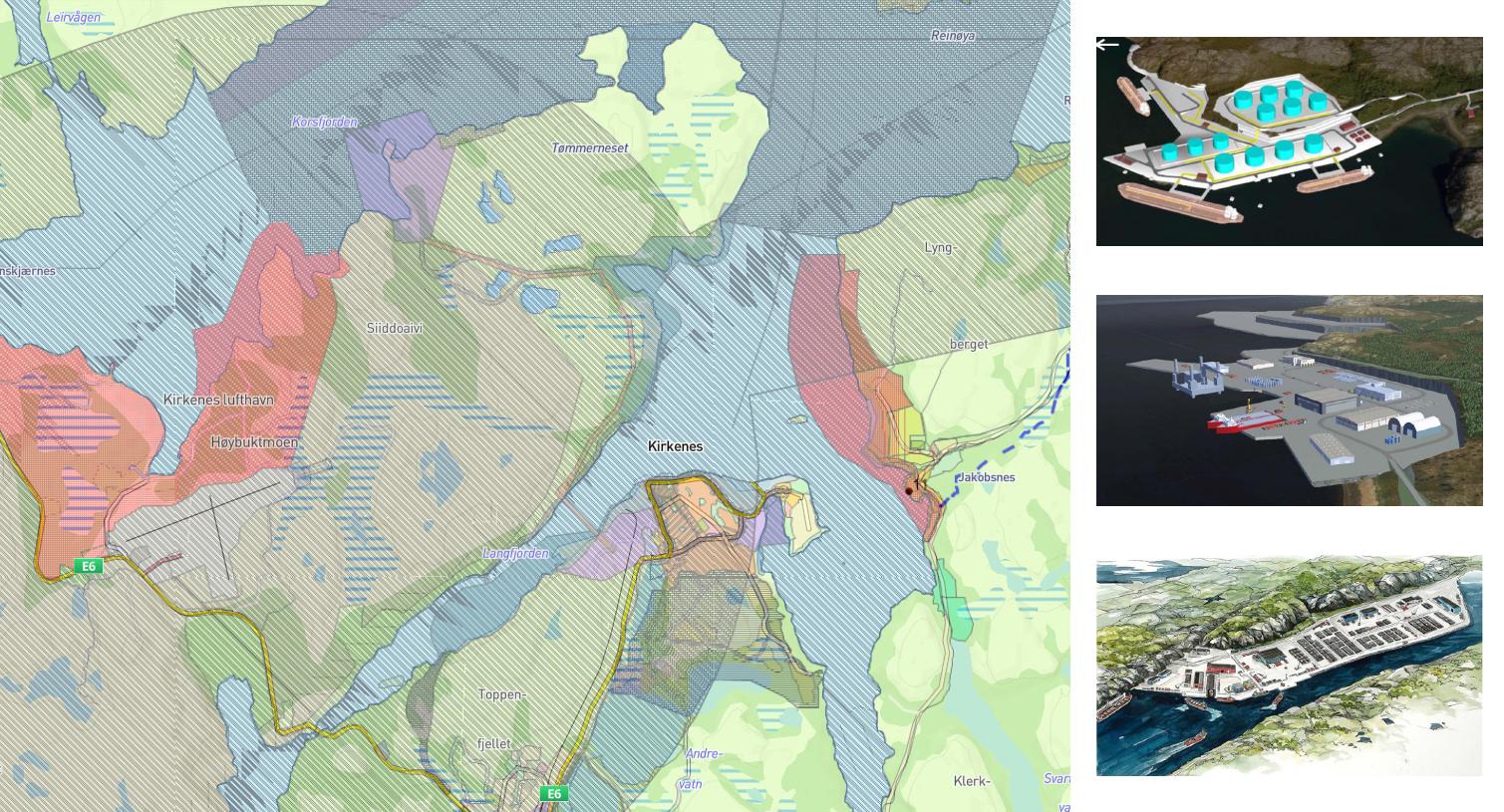
Fig. 2 left: Extract of municipal map of Kirkenes showing the two last remaining options for the potential new port development at Leirpollen or Slambukta / retrieved from https://kommunekart.com/?urlid=5b0cfe9c120649d183760d70f98acd42
right: Port developments illustrated / Sources: Statens vegvesen (2015), Sør-Varanger Kummune (2013, 2019)
Current plans within the region of Kirkenes project the development of a new extra-urban port, serving as a potential strategic part for China's "Polar Silk Road" initiative. This purely economically driven future scenario is rooted in Kirkenes' past. Founded in 1905 as a location for the trans-shipment of iron ore extracted from the Sydvaranger Mine, and residential area for its workers, the collective memory and path-dependency of mining and hard labour restrain the city of defining new legitimate scenarios as a resilient and sustainable future port-city.
Fig.3: Cree leaders join anti-Arctic Railway demonstration of the Sami in Finland. Source: APTN National News, retrieved from https://aptnnews.ca/2018/09/06/cree-leaders-join-anti-railway-demonstrations-in-finland/
To overcome the conflicts within the port development in Kirkenes, the urban design developed in this master thesis imagines an alternative design for the new port development in Kirkenes and shows the power of design to communicate possibilities for a renewed governance and cooperation between port and city. As investigated in a previous blog, it is essential to keep in mind the interrelationship of port and city. It focus on a new perception of port and city as separate but complementary realities. To this end, I use the term liminality (Merriam-Webster explains “liminal” as "transitional" or "intermediate) to move from the static, zone-like definition of an interface as a separation between the two systems of port and city, towards a more dynamic and pluralistic interrelation between port, city, and region.
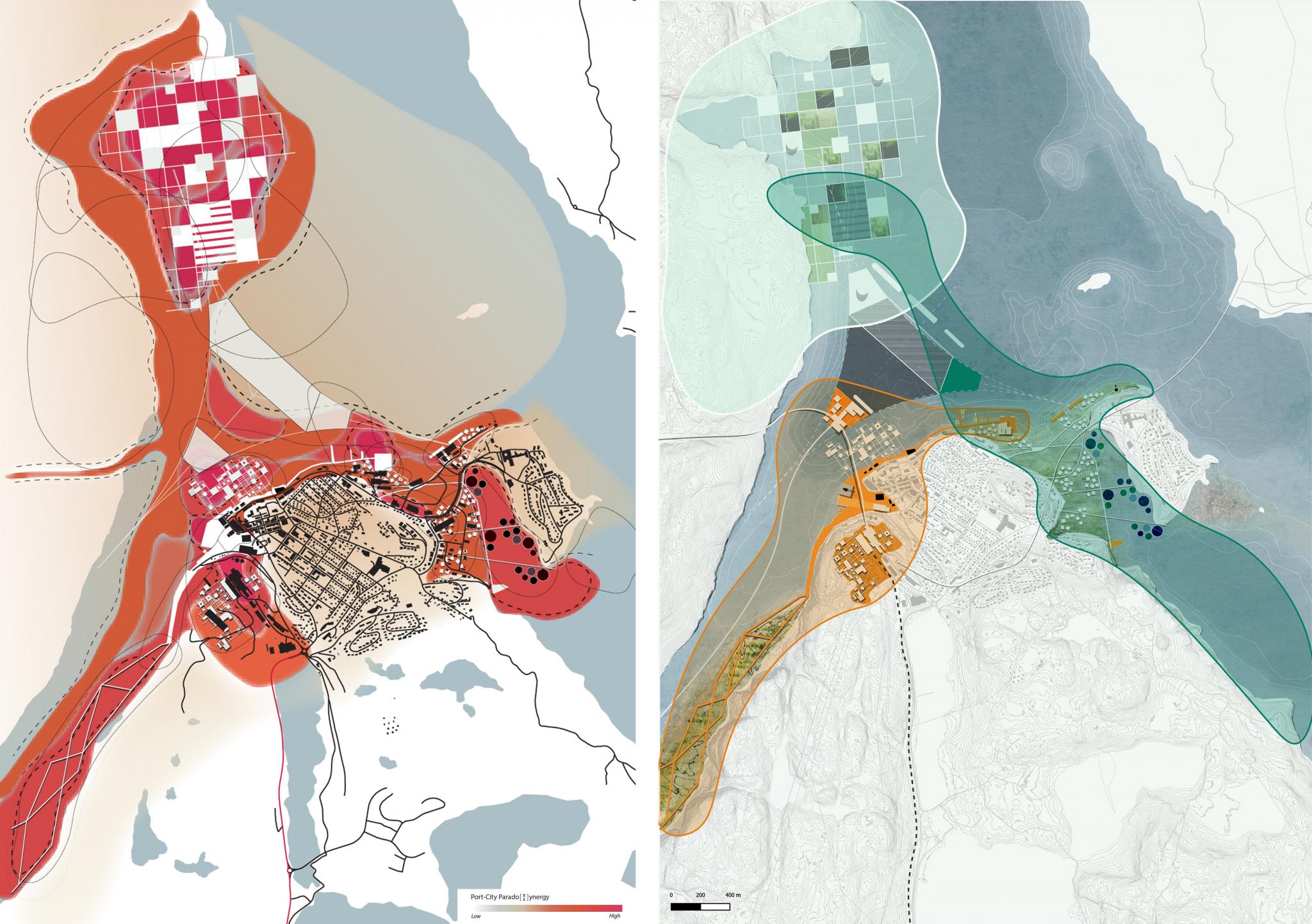
Fig. 4: Left: the emerging Paradoxsynergy-Scapes between port and city and their intensity related to the amount of different, contradicting values and functions.
Right: The synergistic interrelations between local specificities of the city and its surrounding and the port, resulting in a multiple set of spatial and technological implementations and interventions. Source: L. Höller.
The design proposes a floating port structure for a spatial, actors- and values-based approach, to design for the co-existence of port and city within a dynamic, multi-layered liminal port cityscape (Hein, 2019). It consists of three parts.
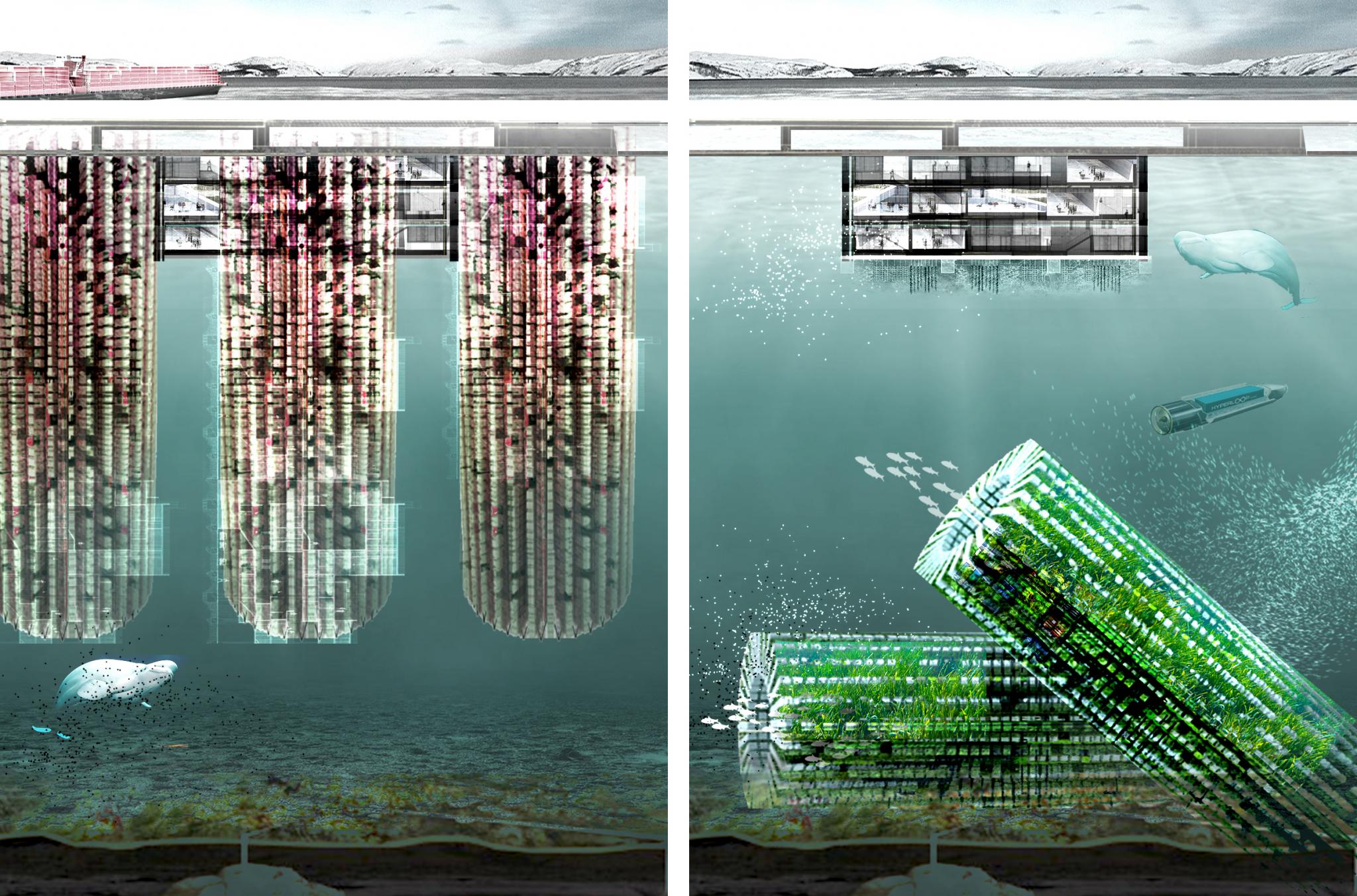
Fig. 5: Imagination and fictional design of the proposed floating port, visualising "Planned Metamorphoses" as one type of liminal design, that creates a port-city relationship based on a planned future transition of the scape from being container-storage of the operating port towards an artificial reef for the aquatic ecosystem.
Source: L. Höller
The design of the Reindeer-Energy Port includes the regional value of reindeer herding as an indigenous lifestyle. The proposal is based on the proposal to produce renewable energy for local and global use based on the shared resource of Lichen. This synergy allows to overcome the institutional conflict between the Sámi, being an important local player, and the municipality, as a driver for the port development. Moreover, it implies a common direction, that can create additional benefits for both interrelated sides.
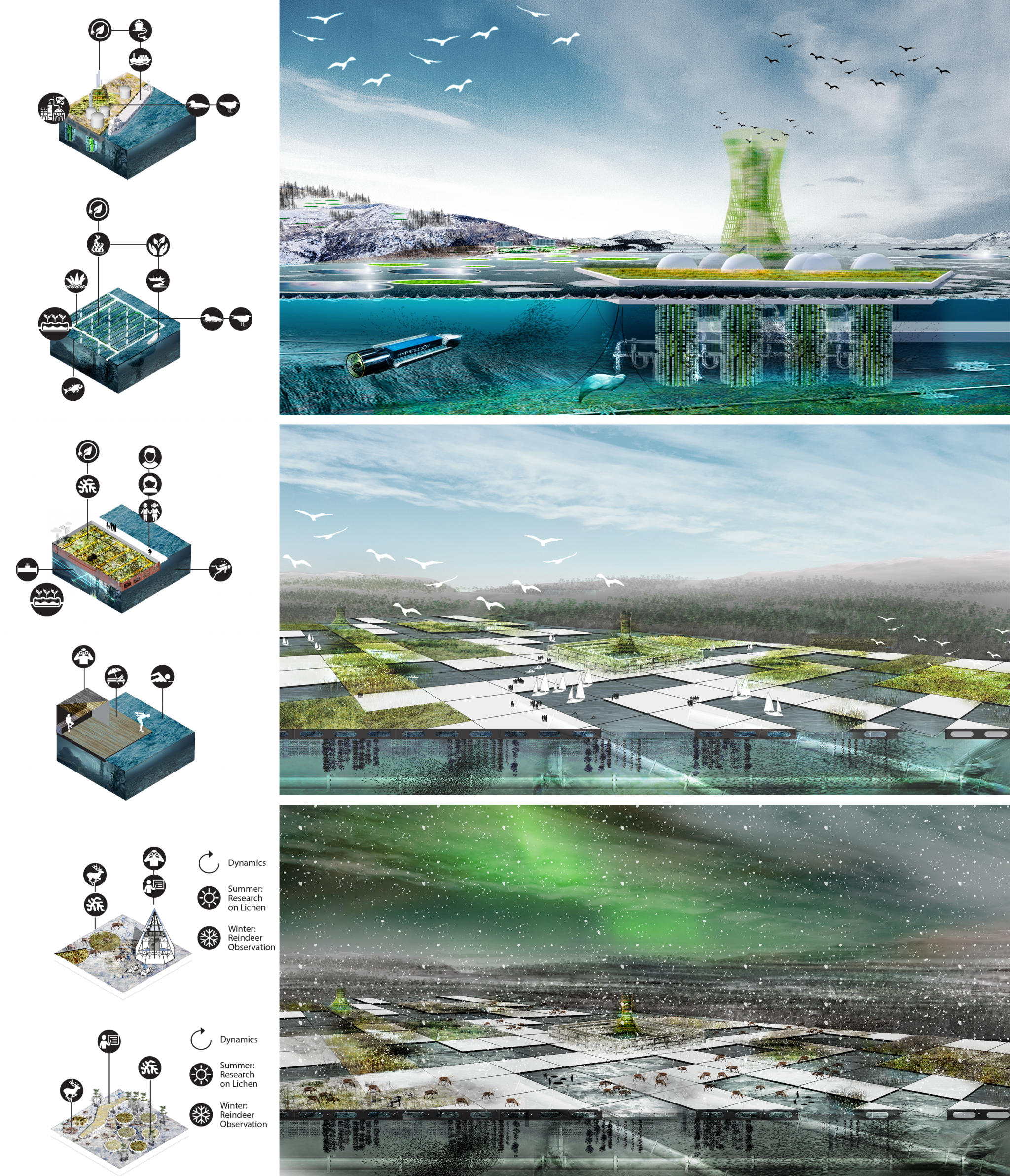
Fig. 6: Fictional design of the floating Lichen-Energy Port, where the area of the Lichen-Farm is shared between the hydrogen production of the port, recreation in the summer and as herding and feeding area for the reindeers and their herders during the winter. Source: L. Höller
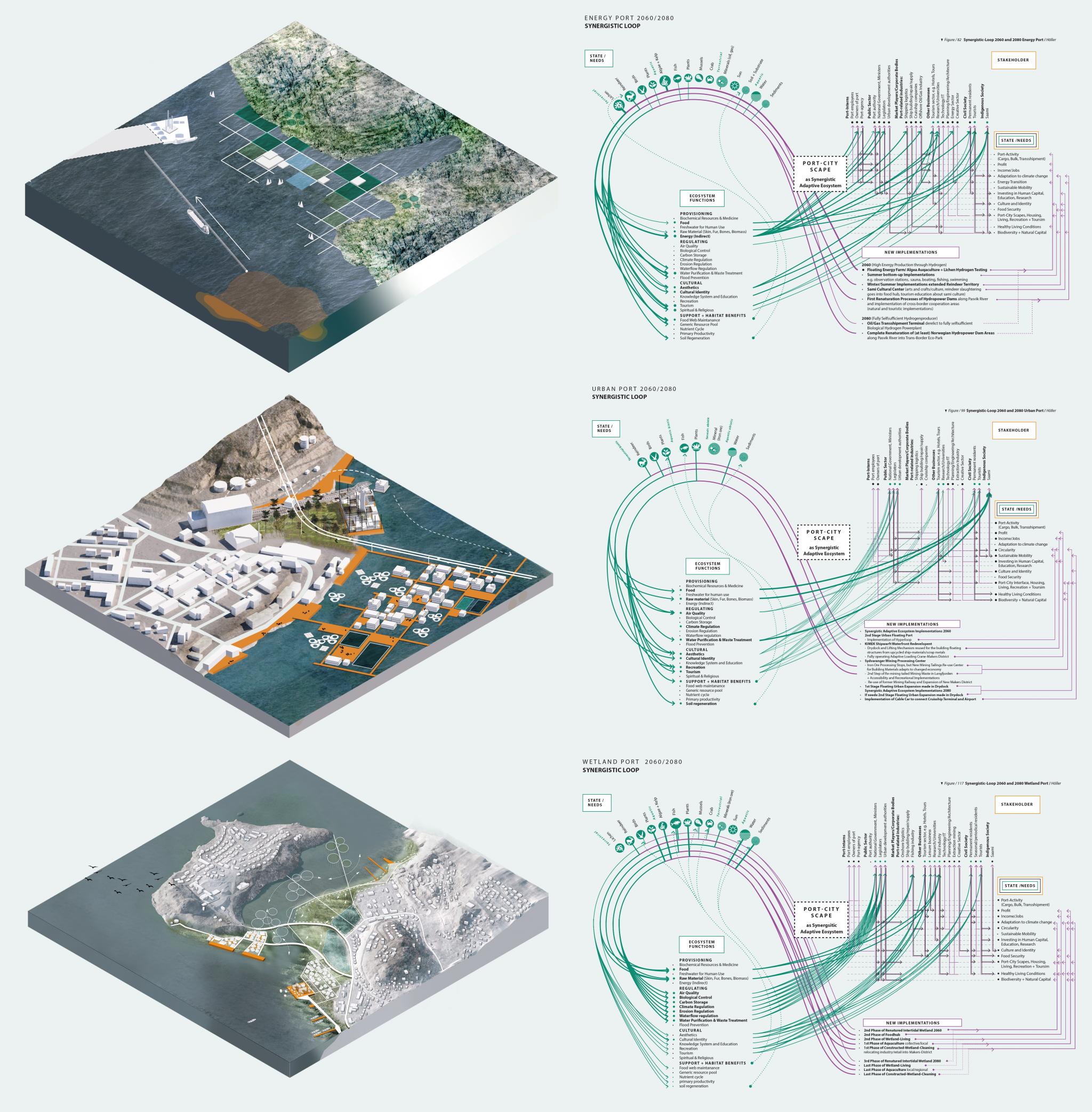
Fig. 7: The Reindeer-Energy Port, The Urban Port and The Wetland Port with their Synergistic Loops, showing the interrelations of stakeholders, their values and the new emerging synergies within the Port-City Scapes Source: L. Höller
The Urban Port focuses on the emergence of a new paradigm along the waterfront. Instead of allowing for re-urbanisation, due to the migration of the former port-activities towards new facilities, the concept aims for new possibilities of port-activities and economic flows, such as creative hubs, makers-districts, space for digitisation, the reuse of port or city-materials and other innovative maritime businesses which can become a fusion of urban and port activities. Furthermore, it envisions an in-between of local-global, home and away, welcome and good-bye by setting the city and the new floating cruise-ship terminal into contrast with each other.
Last but not least, the Wetland Port aims for the notion of port-cities as ecosystems and their interrelation with physical but also cultural resources. The design envisions a liminal scape where the activity of fishing gradually moves from between global fishing activities in deep-sea or coastal areas of the Barents Sea, and the newly proposed local production of fish, algae and other maritime products. The wetland in which multiple interrelated interests and functions such as food production, healthy natural environments and the repurposing of waste-flows are spatially integrated within each other relating port, city, nature and culture.
The outcomes of the design are still fictional, but the imaginative design proposed within the project has the power to communicate the needs for all stakeholders in Kirkenes, and offer a renewed view on port cities. Instead of systematically separating the institutions of port and city as well as solely focusing on the economic, cultural and environmental issues and conflict, we need to re-focus on the in-between spacs as continuous, intermediate and transitional states of both port and city.
Such a view can set the stage for using the tensions between those contradicting elements as an opportunity for "(…) thinking, learning, questioning, creativity, strategy and reflexive awareness" leading to (…) capacity not just to adapt, but to synthesise wider societal goals."(Ravetz, 2013, p. 5102). Those liminal constructs that are part of both - port and city, global and local, generic and specific, problem and solution - allow for creative richness and the cognitive ability to accept the coexistence of contradictory elements.
Acknowledgement
This blog has been written in the context of discussions in the LDE PortCityFutures research community. It reflects the evolving thoughts of the authors and expresses the discussions between researchers on the socio-economic, spatial and cultural questions surrounding port city relationships. Special thanks for comments and reviews to Maurice Harteveld and Carola Hein.
References
Hein, C. (2019). The Port-City Scape: Spatial and institutional approaches to port city relationships, PORTUSplus_the Journal of RETE, N.8, December 2019, Year IX, Special Issue "Governance in Port City Regions", RETE Publisher, Venice, ISSN: 2039-6422
Höller, L. (2020). Dynamic Port-City Scapes: From Liminal "Non-Places" to Imaginative and Synergistic Adaptive Ecosystems. Retrieved from https://repository.tudelft.nl/islandora/object/uuid:5bd2f042-74d1-4dc1-903d-dbe2d49f9f79?collection=education
Merriam Webster (n.d.) Dictionary Liminal. Retrieved from https://www.merriam-webster.com/dictionary/liminal
Ministry of Transport and Communications. (2019). Final Report of the Joint Working Group Between Finland and Norway on the Arctic Railway
Ravetz, J. (2013). New Futures for Older Ports: Synergistic Development in a Global Urban System. Sustainability. 5. 5100-5118. 10.3390/su5125100.
Sennema, H. (2020). What's in a Name? Re-thinking Port Cities as Systems. Retrieved from https://www.portcityfutures.nl/news/whats-in-a-name-re-thinking-port-cities-as-systems
